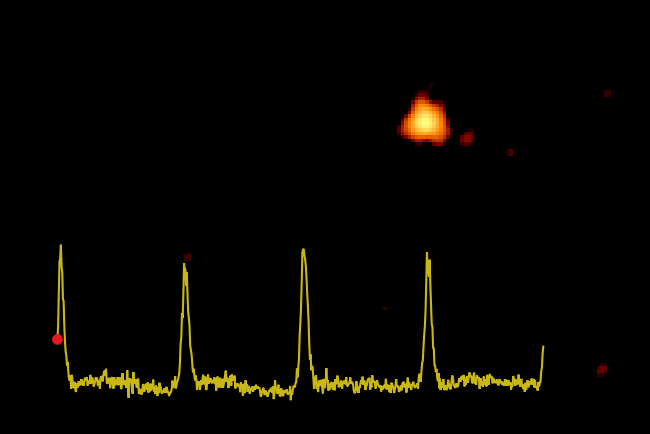Blog
Flash Dance
13 September 2019
 ESA/XMM-Newton; G. Miniutti & M. Giustini (CAB, CSIC-INTA, Spain)
ESA/XMM-Newton; G. Miniutti & M. Giustini (CAB, CSIC-INTA, Spain)Black holes are an astronomical enigma. They are so massive and dense that even light cannot escape them, and yet their immense gravity powers some of the brightest objects in the universe. How exactly this occurs is still a mystery, but it’s driven in part by the way black holes consume matter. When matter is consumed by a black hole it is super-heated, which can generate x-ray light. So x-ray astronomy is a good way to study this process.
Recently, astronomers pointed the XMM-Newton x-ray telescope at a galaxy 250 million light years away. Known as GSN 069, the galaxy has an active black hole in its core. The black hole is small for a supermassive black hole, only about 400,000 times the mass of our Sun. In comparison, the supermassive black hole in our galaxy is more than 4 million solar masses.
Because the GSN 069 black hole has a smaller mass, variations in its activity can happen on shorter time scales. The speed of astrophysical processes is limited by the speed of light, so fluctuations near a large black hole happen more slowly.
The astronomers observed the black hole several times over the course of a few months, and they found it underwent regular periodic brightenings. About every 9 hours its x-ray brightness would increase by a factor of 100 before dimming again.1 They’ve called the effect quasi-periodic eruptions, or QPEs.
This rapid shift in brightness is surprising, and the cause isn’t clear. It could be due to a companion object that interacts with the black hole’s accretion disk as it orbits the black hole. But more likely it is due to instabilities in the flow of matter near the black hole. When strong magnetic fields interact with ionized material, it can cause the motion of material to change quickly. We see similar effects near the surface of the Sun, where field lines get twisted to the point that they snap, like a magnetic rubber band.
Of course, it will take more observations to better understand QPEs. For now, we know that when black holes consume matter, it can involve an interesting dance.
Miniutti et al. “Nine-hour X-ray quasi-periodic eruptions from a low-mass black hole galactic nucleus” Nature DOI: 10.1038/s41586-019-1556-x ↩︎